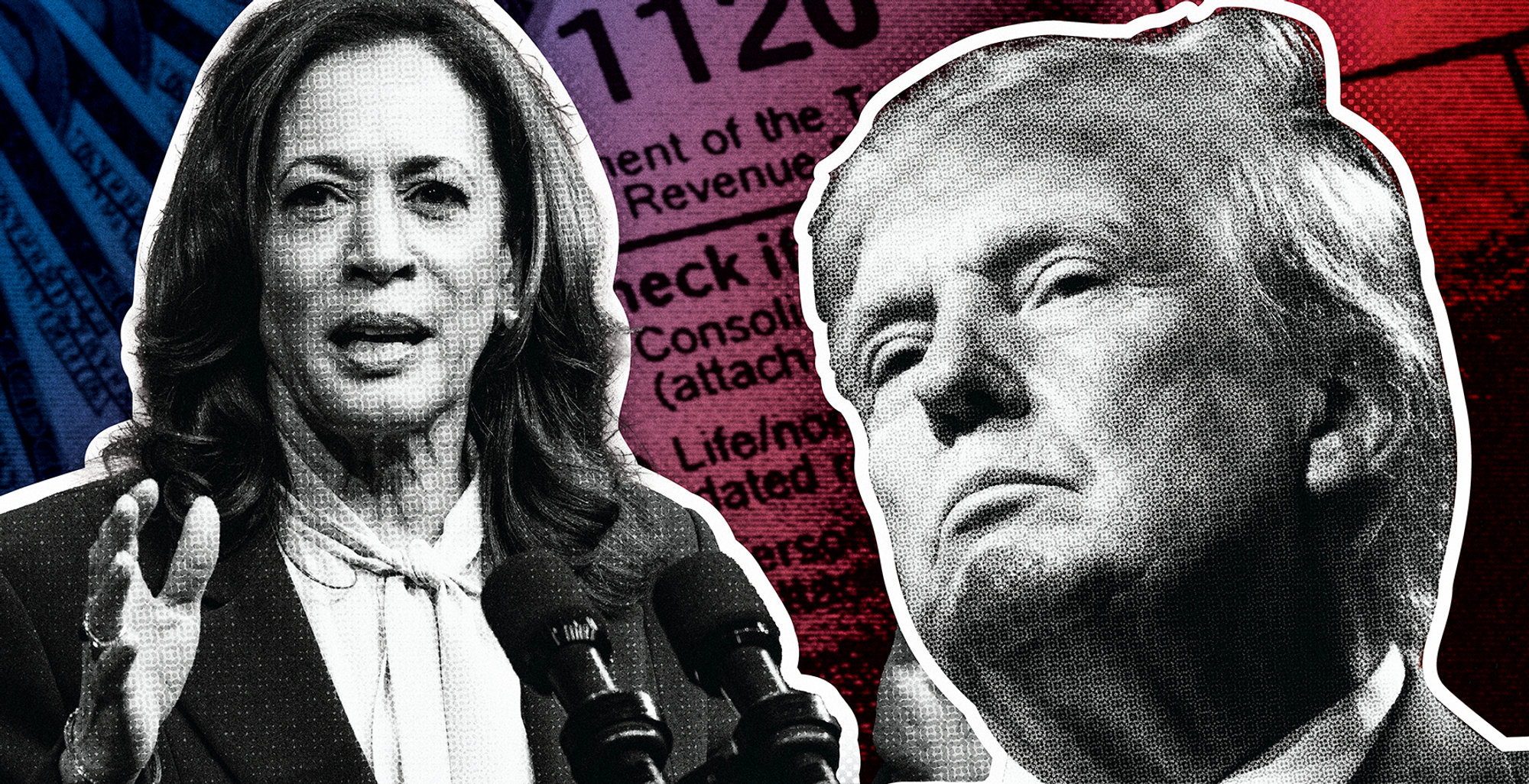
Executives are grappling with whether the November election will stymie their investment and growth plans. A central variable: How high, or low, the corporate tax rate might go.
This summer’s dizzying political developments make it hard to pinpoint what could happen to the corporate tax rate. Vice President Kamala Harris has endorsed increasing the levy, currently at 21%, to 28%, echoing what the Biden administration has proposed. Republican presidential nominee Donald Trump, meanwhile, recently told executives he wanted a 20% corporate tax rate and has floated a levy as low as 15%. Neither may get the respective rates if their party doesn’t gain full power of Congress.
With the election less than three months away, a top question from company insiders is what rate to model for, tax advisers say. Their current response: around 25%.
A higher tax rate now would be more punishing than it would have been 10 years ago. That is because the 2017 cut to 21% broadened the tax base, meaning more income is taxed at a certain threshold. Finance chiefs are looking at the potential impacts of a higher levy on companies’ balance sheets, including cash flow, investment strategies and whether price tags for consumer products will rise to offset bigger tax bills, CFOs and tax advisers say.
“Every dollar that you are paying in taxes reduces your after-tax rate of return on any investment,” said John Gimigliano, principal-in-charge of the federal tax legislative and regulatory services group at KPMG. “And if you have five potential investment options, it’s helpful to know today how changes in the rate could impact whether you go with option A or option E. ”
For some companies, higher tax bills may slow plans for growth.
Taxes already make up a significant portion of Vera Bradley’s cash available for investments, Chief Financial Officer Michael Schwindle said. “When we’re in a situation where we’re in the mid- to upper 20% on an effective tax rate basis, that has a pretty big impact on our cash flow,” he said. “Obviously higher tax rates means less is available.”
The company, known for its quilted bags and backpacks, reported revenue of nearly $81 million for the three months ended May 4, down nearly 15% from a year earlier. Vera Bradley’s effective tax rate was 25% for the quarter.
The handbag retailer is focused on updating the brand’s stores and expanding its digital and physical footprint, with a goal to open around nine new stores and outlet locations this year, the CFO said. A higher tax rate directly affects the capital available to pursue this kind of expansion, he said.
“Store growth is a high capital consumption activity for a retailer,” Schwindle said. “And so that kind of consumption is going to definitely be muted by tax policies.”
A higher levy may trickle down to consumers, said Anthony Gruber, chief financial officer at Mama’s Creations. If the prepared-foods manufacturer’s tax rate—which was 24.5% for the quarter ended April 30—rises, the CFO said he would look for ways to offset the higher bill. One option would be raising prices for the company’s meatballs, olives and other deli food offerings.
“I’m not saying we do that, but obviously that would be one place to look, and then I’d look to other areas for some opportunities to save,” Gruber said. Mama’s Creations’ revenue jumped 29% for the three months through April, to nearly $30 million.
Companies could also see a lower tax rate after the election, which would free up cash for investments, finance chiefs said. Favorable tax rates incentivize companies to keep business operations in the U.S., versus considering international options as a way to potentially limit tax exposure, Gruber said.
Some companies aren’t planning to alter investment decisions, even if their tax liability increases.
Chipotle Mexican Grill’s finance chief, Jack Hartung, prefers a lower tax rate. But the company won’t pull back investments in restaurant openings, staff and ingredients for the chain’s bowls, burritos and tacos if the rate edges higher, said Hartung, who is also Chipotle’s president of strategy, finance and supply chain.
“We have such a strong balance sheet that even if we have to pay more in taxes, that’s not going to affect our strategy,” Hartung said.
Chipotle’s net income for the three months ended June 30 rose 33% from the prior year, to $456 million, and revenue increased 18% to $2.97 billion.
“Nothing that happens in November is going to change our strategy,” the CFO said.
While finance chiefs and other company insiders are looking to understand the implications of a corporate tax rate change, it is too early for many to take action.
Conagra Brands is modeling different tax rates, as it does for other developments that impact its financials, CFO Dave Marberger said. The maker of Hunt’s ketchup, Healthy Choice frozen meals and Slim Jim meat sticks runs three- and five-year forecasts of the business, which if warranted will include different tax rates to understand the impact to cash flow, he said.
Marberger added: “You kind of say, ‘OK, if the tax rate changed to X, would that impact how much we would invest in capital?’”


